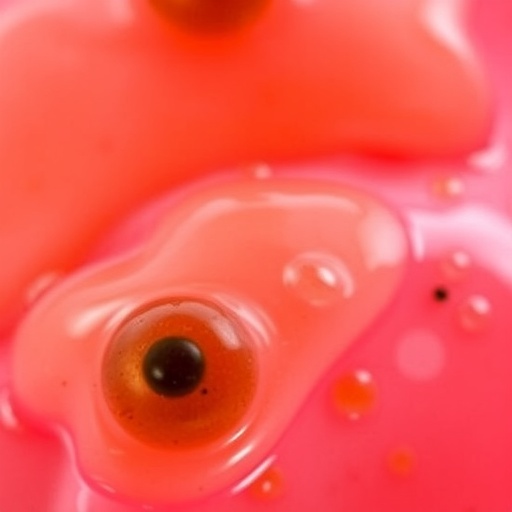Among these biomolecular condensates, the nucleolus stands out as a key operational hub within the nucleus. For over two decades, Professor Lafontaine’s laboratory has delved into the nucleolus’s enigmatic nature—the central site where ribosome assembly initiates. Ribosomes, the cell’s protein synthesis machinery, are complex macromolecular machines composed of multiple RNA and protein components. Their production is vital, governing the cell’s ability to translate genetic instructions into the functional proteins that sustain life.
In a groundbreaking study recently published in Nature, researchers have, for the first time, elucidated the detailed architecture and organizational principles that underlie the nucleolus’s assembly and function. Moving beyond descriptive biology, they have demonstrated the remarkable ability to engineer synthetic nucleoli within living human cells. These designer organelles exhibit altered physical properties and assembly behaviors, revealing a previously uncharted frontier in cellular engineering and synthetic biology.
.adsslot_6mti7bR8qC{width:728px !important;height:90px !important;}
@media(max-width:1199px){ .adsslot_6mti7bR8qC{width:468px !important;height:60px !important;}
}
@media(max-width:767px){ .adsslot_6mti7bR8qC{width:320px !important;height:50px !important;}
}
ADVERTISEMENT
This work draws a compelling analogy: envision a ribosome as a sophisticated automobile consisting of 84 uniquely engineered parts. The nucleolus is then the sprawling factory where these parts are meticulously assembled into a fully operational unit. Intriguingly, the scientific team succeeded in coaxing cells to produce additional “factories,” effectively replicating and modulating ribosome assembly sites. They also manipulated the sequence of ribosomal component fabrication—a pivotal factor that dictates final ribosome quality and function—and even compartmentalized portions of the production line into distinct synthetic condensates.
Such modular reprogramming of intracellular factories is unprecedented in human cells and opens new avenues for understanding the dynamics of nucleolar biogenesis and function. It provides not just a blueprint of nucleolar construction but also a toolkit for customizing ribosome assembly, potentially influencing protein synthesis rates and cellular behavior on demand.
The implications of these findings for medicine are profound. Ribosome biogenesis, while fundamental, is a double-edged sword. Dysregulation can fuel uncontrolled cell proliferation, as seen in many cancers, where ribosome production is upregulated to meet the demands of rapid growth. Conversely, insufficient or faulty ribosome production underlies a class of genetic disorders termed ribosomopathies. These diseases often manifest with deficits in hematopoiesis, impacting red blood cells, and can affect critical organs like the brain and bones. Professor Lafontaine’s lab has been pivotal in uncovering these links, highlighting the nucleolus’s role not just in normal physiology but also in disease pathology.
Technically, the study leveraged advances in RNA biology and phase separation physics, harnessing the intrinsic ability of ribosomal RNA and associated proteins to drive nucleolar assembly. By introducing synthetic RNA constructs with programmable interaction domains, the researchers could tailor the internal landscape of the nucleolus. This synthetic remodeling controlled the phase behavior, modulated the viscosity, and altered the spatial arrangement of protein components, offering unprecedented control over ribosome biogenesis at the mesoscale level.
Moreover, the research sheds light on the enigmatic multiphase organization within the nucleolus. Rather than a homogeneous droplet, the nucleolus comprises coexisting phases with distinct compositions and functions, orchestrated by a network of RNA and protein interactions. By engineering these phases, cells exhibited an ability to spatially separate steps of ribosome maturation, akin to an industrial assembly line segmented into discrete stages, enhancing efficiency and fidelity.
The methodological innovations extend beyond synthetic biology. The team employed cutting-edge microscopy, including super-resolution imaging and live-cell fluorescence techniques, to visualize nucleolar dynamics in real-time. Coupled with biophysical measurements of condensate material properties and computational modeling, this multidimensional approach provided an integrated view of nucleolar assembly and function.
Looking ahead, the potential applications of engineered nucleoli are vast. From augmenting cellular protein production in therapeutic contexts to designing targeted interventions against diseases rooted in ribosome dysfunction, this research pioneers a novel paradigm. The ability to fine-tune intracellular microfactories could lead to breakthroughs in regenerative medicine, cancer therapy, and synthetic cell design.
Furthermore, the study raises intriguing questions about the evolutionary origins of membraneless organelles and their adaptability. It proposes that phase separation-driven condensates offer a flexible platform for cells to regulate complex biochemical processes dynamically. Engineering such condensates affirms their programmable nature and positions them as critical players in cellular organization and function.
In conclusion, this seminal research encapsulates a new era wherein the blurred boundaries between biology, physics, and engineering give rise to novel cellular architectures. By mapping the RNA-driven architecture of the nucleolus and pioneering its synthetic modulation, the researchers have not only unveiled fundamental principles of cell biology but have also laid the foundation for future therapeutic and biotechnological innovations. As we continue to unravel the mysteries of life’s smallest factories, the prospect of designing and controlling cellular machinery with unprecedented precision propels us toward transformative horizons in science and medicine.
Subject of Research: Cells
Article Title: Mapping and engineering RNA-driven architecture of the multiphase nucleolus
News Publication Date: 2-Jul-2025
Web References: 10.1038/s41586-025-09207-4
Keywords: nucleolus, biomolecular condensates, phase separation, ribosome biogenesis, synthetic biology, RNA architecture, ribosomopathies, cellular engineering, intracellular compartmentalization, multiphase organelles, condensate physics, protein synthesis
Tags: biological emulsionsbiomolecular condensatescellular biologycellular compartmentalizationenergy production in cellsgenetic information preservationinsights from cellular researchmembrane-bound organellesnucleolus functionphase separation in cellsprotein synthesis mechanismsribosome assembly





